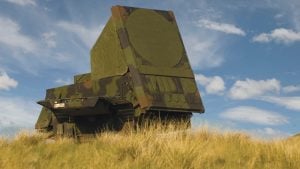In the second class of the NDA 2 2024 Exam Maths Live series on Analytical Geometry (2D), we delved into the rich and diverse world of conic sections. This class focused on the parabola, ellipse, and hyperbola, providing students with a comprehensive understanding of these essential geometric shapes. Additionally, we reinforced these concepts by solving multiple-choice questions (MCQs) covering all topics of 2D geometry, including straight lines, circles, and the newly introduced conic sections. In this blog, we’ll highlight the key points discussed during the class, ensuring a clear and concise overview.
Understanding Conic Sections
Conic sections are the curves obtained by intersecting a plane with a double-napped cone. The primary conic sections include the parabola, ellipse, and hyperbola, each with distinct properties and equations that describe their shape and position in the coordinate plane.
Parabola
A parabola is a U-shaped curve that can open upwards, downwards, leftwards, or rightwards. It is defined as the set of all points equidistant from a fixed point, called the focus, and a fixed line, called the directrix. The axis of symmetry is a line that passes through the focus and is perpendicular to the directrix, dividing the parabola into two mirror-image halves.
Key points about parabolas:
- The vertex is the point where the parabola changes direction.
- The focus lies inside the curve, while the directrix is outside.
- The parabola is symmetrical about its axis.
Ellipse
An ellipse resembles a flattened circle and is defined as the set of all points where the sum of the distances from two fixed points (foci) is constant. The major axis is the longest diameter, and the minor axis is the shortest diameter of the ellipse. The center of the ellipse is the midpoint of the major axis.
Key points about ellipses:
- Ellipses have two foci and are symmetrical about both the major and minor axes.
- The major axis passes through both foci, while the minor axis is perpendicular to it at the center.
- The total distance from any point on the ellipse to the two foci is constant.
Hyperbola
A hyperbola consists of two separate curves, called branches, which mirror each other. It is defined as the set of all points where the absolute difference of the distances from two fixed points (foci) is constant. The transverse axis connects the vertices of the hyperbola, and the conjugate axis is perpendicular to it.
Key points about hyperbolas:
- Hyperbolas have two foci and two vertices.
- The asymptotes are lines that the hyperbola approaches but never touches, providing a framework for its branches.
- The center is the midpoint between the vertices.
MCQ 1: Straight Lines
- Question: Find the slope of the line passing through the points (2, 3) and (4, 7).
- Solution: By calculating the difference in y-coordinates divided by the difference in x-coordinates, we can determine the slope, reinforcing our understanding of line properties.
MCQ 2: Circle
- Question: What is the radius of a circle whose equation is given in the standard form?
- Solution: Recognizing and interpreting the standard form allows us to extract the radius and center of the circle, testing our familiarity with circle properties.
MCQ 3: Parabola
- Question: Determine the vertex of the parabola given its standard equation.
- Solution: Understanding the vertex form of a parabola’s equation helps us locate its vertex, a key feature in graphing and solving related problems.
MCQ 4: Ellipse
- Question: Find the foci of an ellipse given its equation.
- Solution: We must manipulate the equation to identify the foci, testing our grasp of ellipse properties and equations
Conclusion
The second class of the NDA 2 2024 Exam Maths Live series on Analytical Geometry (2D) provided a comprehensive overview of conic sections, focusing on the parabola, ellipse, and hyperbola. The inclusion of multiple-choice questions covering all topics of 2D geometry ensured that students could apply their theoretical knowledge in practical scenarios. By reinforcing these concepts through practical application, the class prepared students for the types of questions they will encounter in the NDA exam. With a solid understanding of these fundamental geometric shapes and their properties, students are well-equipped to tackle the challenges of the exam with confidence.




















